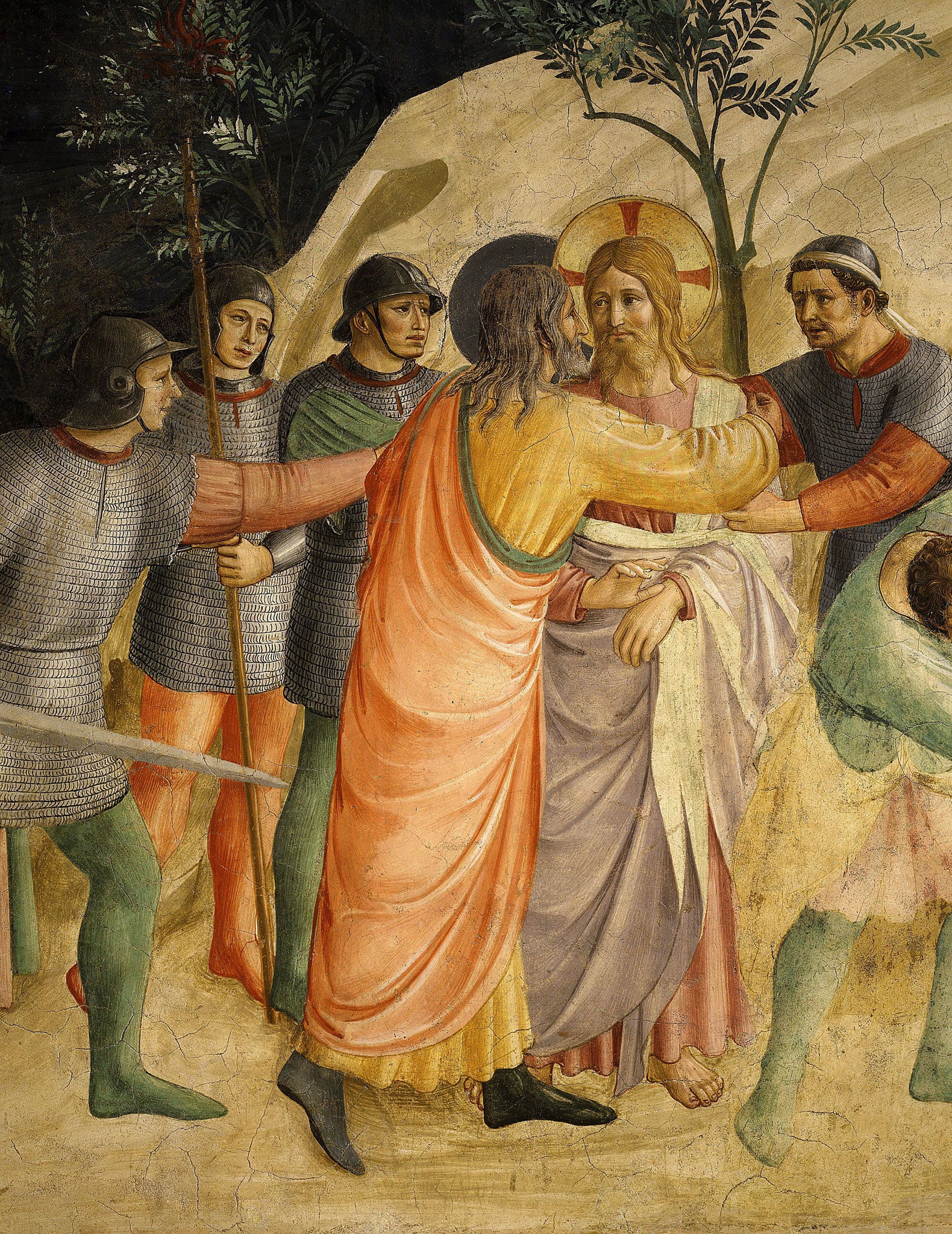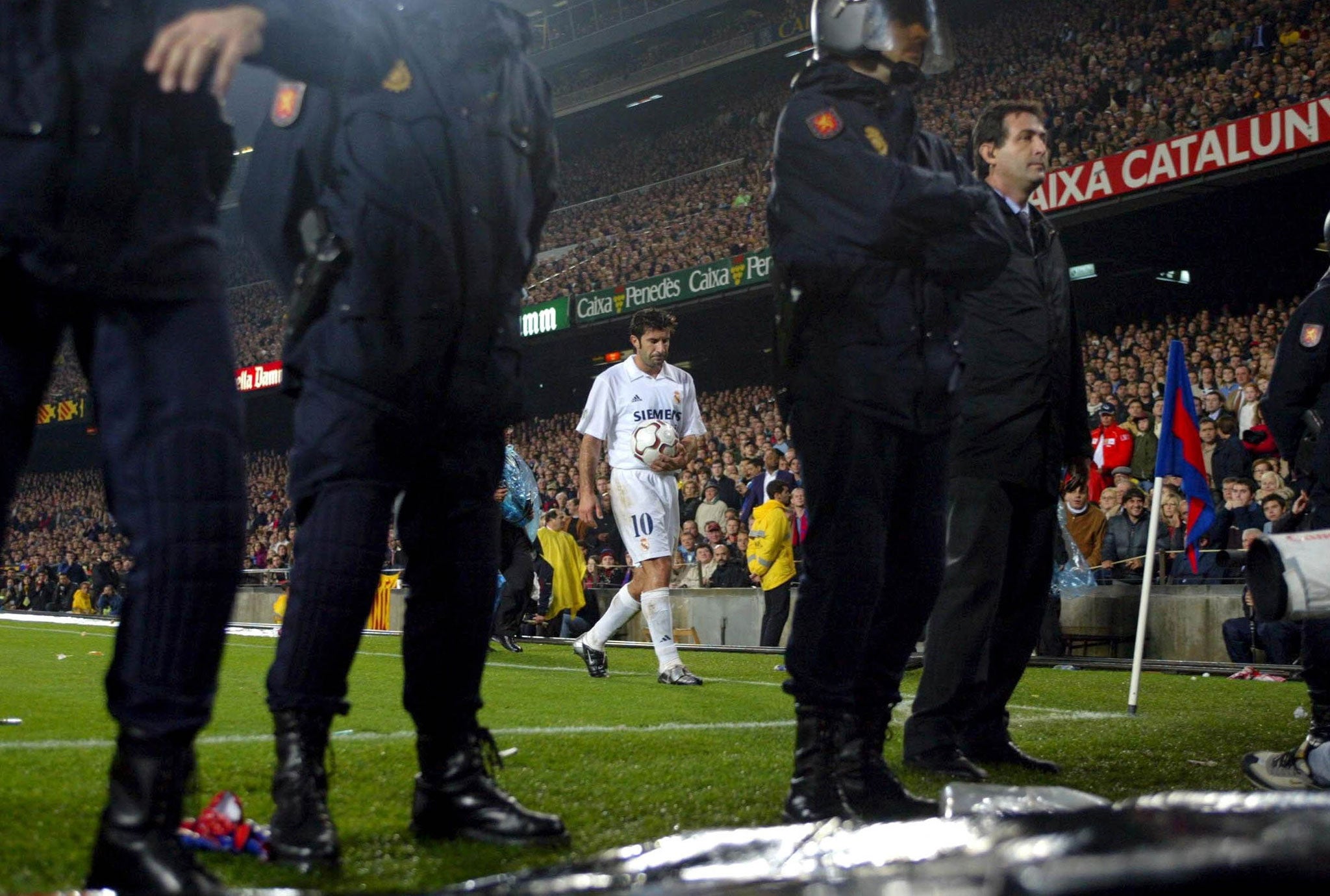Was Judas - Christianity's great traitor - wrongfully condemned?
Without the betrayal, there could have been no crucifixion – and no redemption. Was the apostle whose name is a byword for betrayal actually history’s greatest scapegoat? On Easter Sunday, Peter Stanford reconsiders the evidence

Your support helps us to tell the story
From reproductive rights to climate change to Big Tech, The Independent is on the ground when the story is developing. Whether it's investigating the financials of Elon Musk's pro-Trump PAC or producing our latest documentary, 'The A Word', which shines a light on the American women fighting for reproductive rights, we know how important it is to parse out the facts from the messaging.
At such a critical moment in US history, we need reporters on the ground. Your donation allows us to keep sending journalists to speak to both sides of the story.
The Independent is trusted by Americans across the entire political spectrum. And unlike many other quality news outlets, we choose not to lock Americans out of our reporting and analysis with paywalls. We believe quality journalism should be available to everyone, paid for by those who can afford it.
Your support makes all the difference.There are still some in the small Dorset village of Moreton who wish their row about Judas Iscariot had remained a purely local matter. But the refusal, 30 years ago, of a gift to their parish church of a window that depicted the notorious apostle divided both worshippers and the community – and brought the international media to this sleepy hollow.
They were drawn, above all, by the pedigree of the artist being snubbed, Sir Laurence Whistler – an internationally renowned glass engraver and brother of the more famous Rex. Yet the media fascination was all the more intense because the dispute centred on Judas, the arch-traitor who sold out Jesus with a kiss for 30 pieces of silver. Even in our secular, sceptical age, his name retains a rare power to intrigue and inflame.
So much so that the Moreton impasse took three decades to subside – another reason why no one wants to risk resurrecting it again now with loose talk. The original objection – made after Whistler had already produced 12 other windows for the church, all gratefully received – came from 44 parishioners, backed by their vicar and eventually the local bishop. They didn't want Judas darkening the doors – or panes – of St Nicholas, especially since the theme of the other dozen designs was "light". Judas represented darkness, the devil's henchman, the human face of evil. More particularly, they didn't like Whistler's image, as it suggested that Judas might not have been that bad after all.
Gospel revisionism is nothing new. Neither is the defensive reaction it provokes in some regular church-goers. Hardly a month seems to go by without a theologian, archaeologist, playwright, novelist, painter and/or sensationalist-on-the-make airing a new theory that puts Jesus and his inner circle under new scrutiny and occasionally exposes them to ridicule. Until lately, however, Judas Iscariot remained almost unchallenged as the very worst of the worst.

There were a few radical voices, such as Thomas De Quincey in the 19th century, who revisited Judas and his brutal act of betrayal, to posit him instead as a political revolutionary who turned against an otherworldly leader. Jesus, the essayist argued, would insist on going on about heaven when he should have been inspiring the Jews to rise up against their Roman overlords. And in the 20th century, literary heavyweights such as Jorge Luis Borges sought out the humanity in Judas, and in the process questioned quite how flawless Jesus himself actually was.
Yet it has only been in recent decades that such efforts to rehabilitate Judas have started to resonate more widely, with the echo reaching down even into parish churches in rural England. In what he called the "Forgiveness Window", Whistler offered a direct challenge– even without the title – to the traditional fate of Judas.
Taking as its inspiration the moment of his lonely suicide, described in Matthew's gospel, Whistler's window has the traitor dressed in Everyman's clothing as he hangs at the end of a rope. His back is turned, with a shaft of light from heaven illuminating both his face in side-profile and the ill-gotten coins as they fall to the ground. Flowers spring up to mark the spot where they land. This is Judas redeemed. However terrible his sin of betrayal, it can still be forgiven.
Modern Christianity, of course, is often to be heard loudly promoting a countercultural message of forgiveness in a generally unforgiving world. Some even claim forgiveness as the distinguishing Christian virtue. How curious, then, that its churches find it so hard to practise what they preach. In 2008, for example, the Jesuit theologian Cardinal Avery Dulles, a highly respected adviser to popes, argued trenchantly in a celebrated essay that the gospel descriptions of Judas "could hardly be true" if the traitor had been forgiven. He was in hell for ever, the cardinal insisted, and any suggestion to the contrary was "thoughtless optimism".
Whistler was an optimist, but that must have been sorely tested in his later years, for he did not live to see the offending window finally installed. He died in 2000, but it was only last year that the peace-making efforts of a new, female, vicar finally resolved the dispute in Dorset. Even then it was done with no fuss, no ceremony, no headlines, and in a blind window at the back of the church, visible only from the graveyard to a congregation of the dead. Judas Iscariot is still being treated as if he were toxic.
It is the same assumption that gives his name such power to wound in an age where most public rebukes are treated as badges of honour. In April 1971, when giving a Maundy Thursday reflection lamenting the number of Catholic priests who had left to get married, Pope Paul VI labelled them "Judases". And this tendency to name and shame is not restricted to the Church. Politicians are one group fond of invoking his example in the heat of debate. In 1998, the Australian Prime Minister, Tony Abbott, told his parliament that an ex-aide who had defected to another party was his "personal Judas".

The taunt of "Judas" is also familiar on the football terraces, directed at players who have, in the eyes of fans, committed an unforgivable betrayal by agreeing a transfer to another club. The most notorious contemporary example is that of the Portuguese star Luis Figo, who, in 2000, moved from Barcelona to their hated rivals Real Madrid. When he returned with his new club to the Nou Camp Stadium, he was not only deafened by cries from the stands of "Judas", he even had a pig's head thrown at him.
His tormentor may have been alluding to the long-standing habit in Christianity of using the name of Judas to scapegoat the Jews, who do not eat pork. For centuries it was commonplace in the Church to refer to "Judas the Jew" – largely because his name in Hebrew, Yehuda, from the verb "to praise", was so close to Yehudi, the word for "Jew". Preachers exploited this overlap to scapegoat the whole Jewish race with the traitor's characteristics – greed, love of money, untrustworthiness – and present them as the enemy within Christian society. St Jerome, the late fourth-century scholar still revered for producing the Vulgate (the standard Latin version of the Bible), wrote elsewhere of Judas as "cursed, that in Judas the Jews may be accursed… Whom do you suppose are the sons of Judas? The Jews – Iscariot means money and price."
Judas's role in scapegoating the Jews continued through the medieval period – when he was depicted with stereotypical Jewish facial features, dressed in yellow (which the Church had designated their colour), and grasping his swag-bag of silver coins – right up to within living memory, with horrific effect in the Holocaust. "As little as Judas Iscariot can be understood without the Lord whose community he sneeringly betrayed," said the Nazi ideologue Walter Frank in a 1939 radio broadcast, "that night side of history called Jewry cannot be understood without being positioned in the totality of the historical process where God, Satan, Creation and Destruction confront each other in an eternal struggle."
In the aftermath of the Holocaust, this age-old use of Judas to fuel anti-Semitism was outlawed, allowing in its wake a new light to be shone on his story in the gospel narratives. Because within the covers of the New Testament itself, there is another way altogether of reading Judas – less the devil's tool and more God's agent.
Chronologically, among the earliest of the writings to be found in the New Testament is St Paul's First Letter to the Corinthians. Here, he writes simply of Jesus being betrayed (or "handed over", depending on which translation you favour) to a hostile authority and put to death. Quite who did the betraying is treated as irrelevant. It was the death and resurrection that mattered – the founding events of Christianity.

Paul makes plain that all 12 original apostles were there to see the risen Christ – so Judas had done nothing to cause himself to be excluded, or had been forgiven even if he had.
Yet, some 20 years later, when the evangelist known as Mark wrote the first gospel account of Jesus, he decided that this faceless act of betrayal was too vague; he identified Judas as the betrayer. The other three gospel writers, Matthew, Luke and John, followed his lead and built the character of the betrayer with all the details now familiar to us – the coins, the kiss, the suicide. Quite why Mark accused Judas is impossible to know. Perhaps he was aware of an eye-witness account Paul had missed. Perhaps he was simply giving his audience someone to blame – a need deep-rooted in human nature. He might also have been accusing "Judas the Jew" as part of Christianity's determination to separate itself from its roots by showing the Jews to be poisonous.
Yet in the gospels, the circumstances of Jesus's arrest and death are wide open to interpretation. Since Christianity believes in an omnipotent God, then logically Jesus's birth, ministry, arrest, trial, death and resurrection were all part of a divine plan. As was his betrayal. Which makes Judas the fall guy who had to do something unpleasant on God's behalf. In Matthew, as Judas betrays him in the Garden of Gethsemane on the night of his arrest, Jesus says: "My friend, do what you are here for." And in John's account of the Last Supper, just after Jesus has again identified Judas as the one who will betray him, he tells the traitor: "What you are going to do, do quickly." This implies that Jesus knows the plan, and the part Judas will play.
All of which may not be quite enough to elevate Judas to the company of saints, but it should surely, if belatedly, mean his memory can start to be detoxified. Or even made into something more positive. That was Laurence Whistler's essentially modest and reverent proposal. Yet it still managed to cause a 30-year stand-off at the dawn of the 21st century.
'Judas: The Troubling History of the Renegade Apostle' by Peter Stanford is published by Hodder & Stoughton, priced £20. Stanford is a former editor of the 'Catholic Herald'
Join our commenting forum
Join thought-provoking conversations, follow other Independent readers and see their replies
Comments